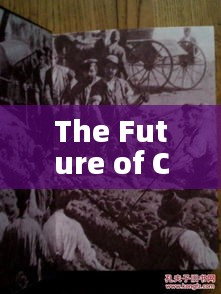The Future of Communication: Real-Time Voice Conference Translation
In the fast-paced world we live in, communication is key to success in both personal and professional settings. With the global nature of business and the increasing diversity of cultures, the need for real-time voice conference translation has become more crucial than ever. This article explores the evolution of real-time voice conference translation technology, its benefits, challenges, and the future it holds.
The Evolution of Real-Time Voice Conference Translation
The concept of real-time voice conference translation has been around for several decades. However, it has only recently become a practical and efficient solution due to advancements in artificial intelligence and natural language processing. Early attempts at voice translation involved cumbersome hardware and limited language support.
In the 1980s, the United Nations introduced the CART (Communication Access Real-Time Translation) system, which allowed interpreters to translate spoken language into text in real-time. While this was a significant step forward, it was limited to written translation and required human intervention.
Fast forward to the 21st century, and we have seen a surge in the development of real-time voice conference translation technology. Companies like Google, Microsoft, and IBM have invested heavily in this field, leading to the creation of sophisticated AI-powered systems that can translate spoken language in real-time across multiple languages.
Benefits of Real-Time Voice Conference Translation
The benefits of real-time voice conference translation are numerous and impactful. Here are some of the key advantages:
- Enhanced Communication: Real-time translation breaks down language barriers, enabling participants from different linguistic backgrounds to communicate effectively and collaborate seamlessly.
- Increased Productivity: With the ability to communicate in real-time, teams can make decisions faster, resolve issues more efficiently, and complete projects on time.
- Cost-Effectiveness: By eliminating the need for human interpreters, real-time voice conference translation can significantly reduce translation costs, especially for large-scale international meetings.
- Accessibility: This technology makes communication more accessible to people with hearing or speech impairments, ensuring inclusivity in all interactions.
Challenges and Limitations
Despite its many benefits, real-time voice conference translation technology still faces several challenges and limitations:
- Accuracy: While AI-powered systems have improved significantly, they are not yet perfect. Misinterpretations and misunderstandings can still occur, especially with complex or idiomatic language.
- Language Support: While many languages are now supported, there is still a gap in coverage, particularly for less commonly spoken languages.
- Cultural Nuances: Real-time translation can struggle to capture the nuances of cultural context, which can lead to misunderstandings or miscommunication.
- Technology Dependence: Reliance on technology can be problematic if there are technical issues or if the system is not properly calibrated.
The Future of Real-Time Voice Conference Translation
The future of real-time voice conference translation looks promising. Here are some potential developments:
- Improved Accuracy: Ongoing research and development in AI and natural language processing are expected to enhance the accuracy of translation systems, reducing misinterpretations.
- Broader Language Support: As more companies and organizations invest in this technology, we can expect broader language support, including less commonly spoken languages.
- Integration with Other Technologies: Real-time voice conference translation may be integrated with other communication tools, such as video conferencing and chatbots, to create a more comprehensive communication platform.
- Ethical Considerations: As the technology evolves, ethical considerations, such as data privacy and security, will need to be addressed to ensure responsible use.
In conclusion, real-time voice conference translation is a game-changer for global communication. While there are challenges and limitations, the future looks bright for this technology. As it continues to evolve, it will undoubtedly play a crucial role in breaking down language barriers and fostering collaboration across the globe.
The Evolution of Real-Time Voice Conference Translation
The Evolution of Real-Time Translation at English Conferences
The Impact of Social Media on Mental Health: A Comprehensive Debate
The Fruit of Hard Work: Unveiling the Rewards of Perseverance
The Evolution and Challenges of Real-Time English Translation Evaluation
The Rise of Popular Wallpapers: A Visual Trend Across Cultures
Revolutionizing Productivity: The Power of RTCS in Modern Workplaces










 浙ICP备2021033100号-1
浙ICP备2021033100号-1